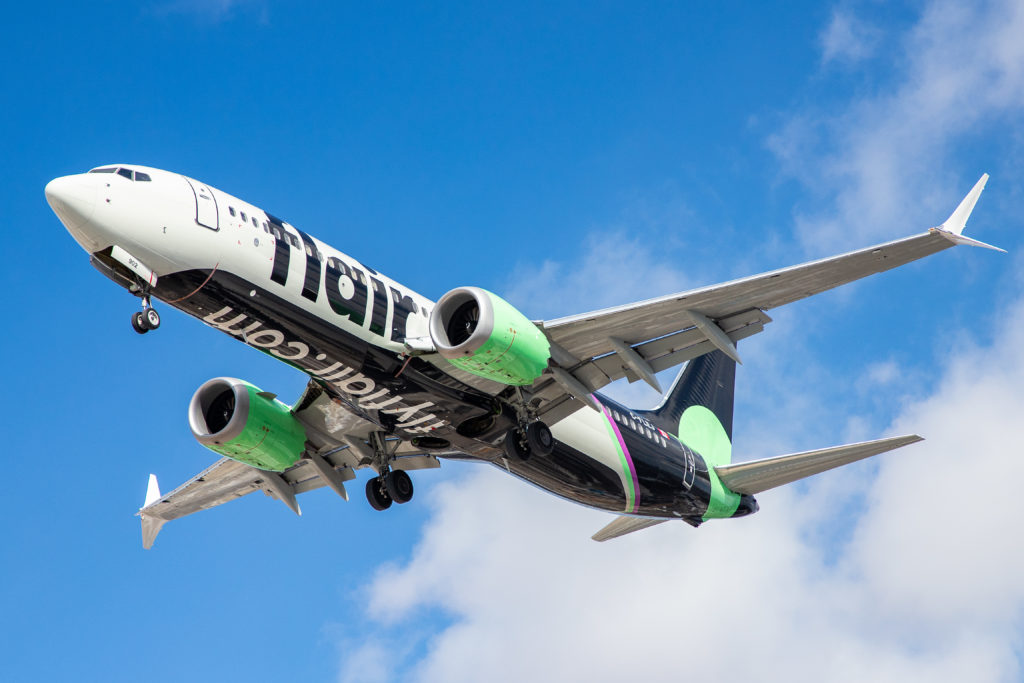Estimated reading time 7 minutes, 24 seconds.
It’s the moment Canadians have been waiting for for the past two months. The Canadian Transportation Agency (CTA) has issued its final determination on ultra-low-cost carrier, Flair Airlines.
On June 1, the CTA announced that Flair has addressed the concerns raised by the agency in its March preliminary review, and that the airline is, indeed, Canadian.
During a June 1 press conference held by Flair, CEO Stephen Jones said: “Though we never doubted it . . . we’re thrilled to receive the positive decision today from the CTA, which reinforces that Flair is a Canadian airline. The question has been answered. It’s done.”

In early March, the CTA raised concerns that too much of Flair’s operations were controlled by American interests. In April 2019, Miami-based 777 Partners LLC — which leases Flair’s 737 Max 8 aircraft — took a 25 percent interest in the carrier. In addition to this, the CTA found in its preliminary review that 777 Partners had more than half of Flair’s board seats.
(The Canada Transportation Act states that a domestic airline must be incorporated in Canada and at least 51 per cent of voting interests must be owned and controlled by Canadians to achieve an operating license.)
In mid-April, Jones addressed reporters, confirming that the carrier was working to respond to the CTA’s concerns, and had “dealt with most of them already.”
The carrier has worked with the CTA over the last two months “to address all of the concerns that they raised with us about our position — some governance-related concerns, some finance-related concerns… we’ve gone through line by line and addressed those,” said Jones.
The airline has expanded its board from five seats to nine — seven of which are to be held by Canadian members. “We haven’t yet seated all of those,” said Jones on June 1. “We’ve called for nominations. There’ll be a shareholders meeting called shortly to put those directors in place.”
Flair also adjusted parts of its shareholders agreement to emphasize Canadian control of the board and other governance powers at the airline. Company shareholders, including 777 Partners, were supportive of the changes, which became effective immediately.
Moreover, Flair is refinancing the debt it owes to 777 Partners to ensure debt funding will be available until at least 2026. The CTA said this considerably mitigates “777’s ability to exert influence over Flair.”
In its June 1 determination, the CTA states: “After considering all of the facts, the changes implemented since the Agency’s Preliminary Determination . . . have addressed the concerns raised. . . . Accordingly, the Agency finds that, as Flair meets the incorporation and voting interest requirements and that Canadians control in fact Flair, Flair is Canadian.”
With the news of Flair’s continued operations in Canada, Jones noted that this year alone, the carrier will “provide nearly 4 million affordable flights to Canadians from all walks of life, saving them well over $200 million.”
Jones confirmed that, although changes have been made to the airline’s Board and debt structure with 777 Partners, the carrier’s fares will not change as a result.
“The strategy stays the same,” he said. “There’s nothing that’s changing here. All that has changed is that the uncertainty about our status as Canadian has been removed.”
The situation with the CTA has also not had any effect on Flair’s goal to get to 50 aircraft in five years. Jones confirmed that Flair has 14 aircraft flying today — three Boeing 737-800s and 11 737 Max 8s. The airline is expecting its next Max aircraft within the next week, with another three on the way this month, and one more in July. That will bring Flair’s fleet to 19 aircraft by July. Jones said the airline will then grow its fleet again in spring 2023 with 10 additional aircraft.
Those aircraft will all be leased, said Jones, adding that Flair will “go through the normal process of having lessors compete for that business.”
While a number of the airline’s aircraft are being leased by 777 Partners directly — and a number of them are supported in some way by 777 — Flair has made an agreement with the CTA that a proportion of its leases moving forward will be standalone and will have no link whatsoever to 777.
The CTA’s determination is sure to cause upset for a number of people in the industry, as two airline associations representing Air Canada, WestJet, and a number of other carriers made it clear that a green light for Flair would set a “troubling precedent.”
Jones said: “There’s been such a cozy duopoly here for so long, that whenever you stir the pot, whenever you come and spoil the party by actually showing people that you don’t need to spend $800 . . . to fly across the country, of course people are going to be upset. So, they use their power to try and destabilize the business.
“We love competing,” he added. “We’re here to compete, and we’re here to win.”
Where does Flair go from here? Jones said the goal is “to continue to grow the business, growing our network, growing our jobs that we’re creating . . . and continuing to deliver low fares to all Canadians. It’s a pretty simple mission.”








